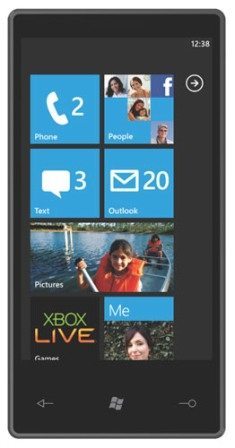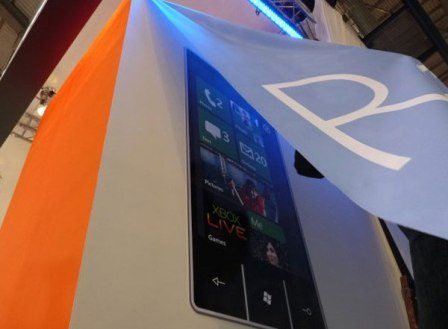At the MWC 2010 Microsoft officially announced Windows Phone 7 Series, the latest iteration of the Microsoft’s mobile platform. For the first time, the OS previously known as Windows Mobile, has seen a complete overhaul from the user interface to the concept behind the OS.
The is not your average Windows Mobile phone, but is more like a beefed-up Zune HD. Some the hightlights of the new OS as well as hardware requirements include:
- High resolution, capacitive, multitouch display with gestures that are similar to those in Windows 7 PC operating system
- Each handset will have the same three dedicated buttons: start, Bing search, back button
- UI is touch-friendly throughout the entire OS, no stylus is needed
- Personal and business information is integrated on the handset, emphasis on the dual function of the handset as a personal and business device
- New scrolling, tile based interface for the start screen that dynamically displays updated content and can be customized to display the tiles relevant to each user
- Phone/address auto-detection that links to dialer and map application
- Application bar at the bottom of each application that gives the user quick access to the most used functions within an application
- Bing search with geolocation to provide local results, directions, and business/restaurant reviews
- Focus on efficiency that minimizes the number of touches to perform actions
- Web browser is based upon desktop Internet Explorer code with improved text rendering technology to make web browsing easier
- Focus on the phone as an integrated device with different experiences organized into seven core hubs including
- people (social networking integration)
- pictures (view/share pictures between phone, desktop, and social networks)
- games (Xbox live games and service)
- music + video (Zune)
- marketplace (application store)
- office/productivity (Sharepoint/Exchange support)
- Tighter control over the phones with a minimum hardware definition for handsets to provide a consistent design experience for the user while allowing manufacturers and operators some flexibility to customize the handsets without changing the underlying core
- Windows Live service integration
- No Adobe Flash support in version 1 of the OS
- Close partnership with AT&T and Orange
Several handset manufacturers and mobile operators have jumped on board the Windows Phone 7 including AT&T, Deutsche Telekom AG, Orange, SFR, Sprint, Telecom Italia, Telefónica, Telstra, T-Mobile USA, Verizon Wireless, Vodafone, Dell, Garmin-Asus, HTC, HP, LG, Samsung, Sony Ericsson, Toshiba and Qualcomm. Additional details on Windows Phone 7 series application development will be revealed at the MIX10 conference in March. The first Windows 7 phones will be available by holiday 2010. (www.windowsphone7series.com)








